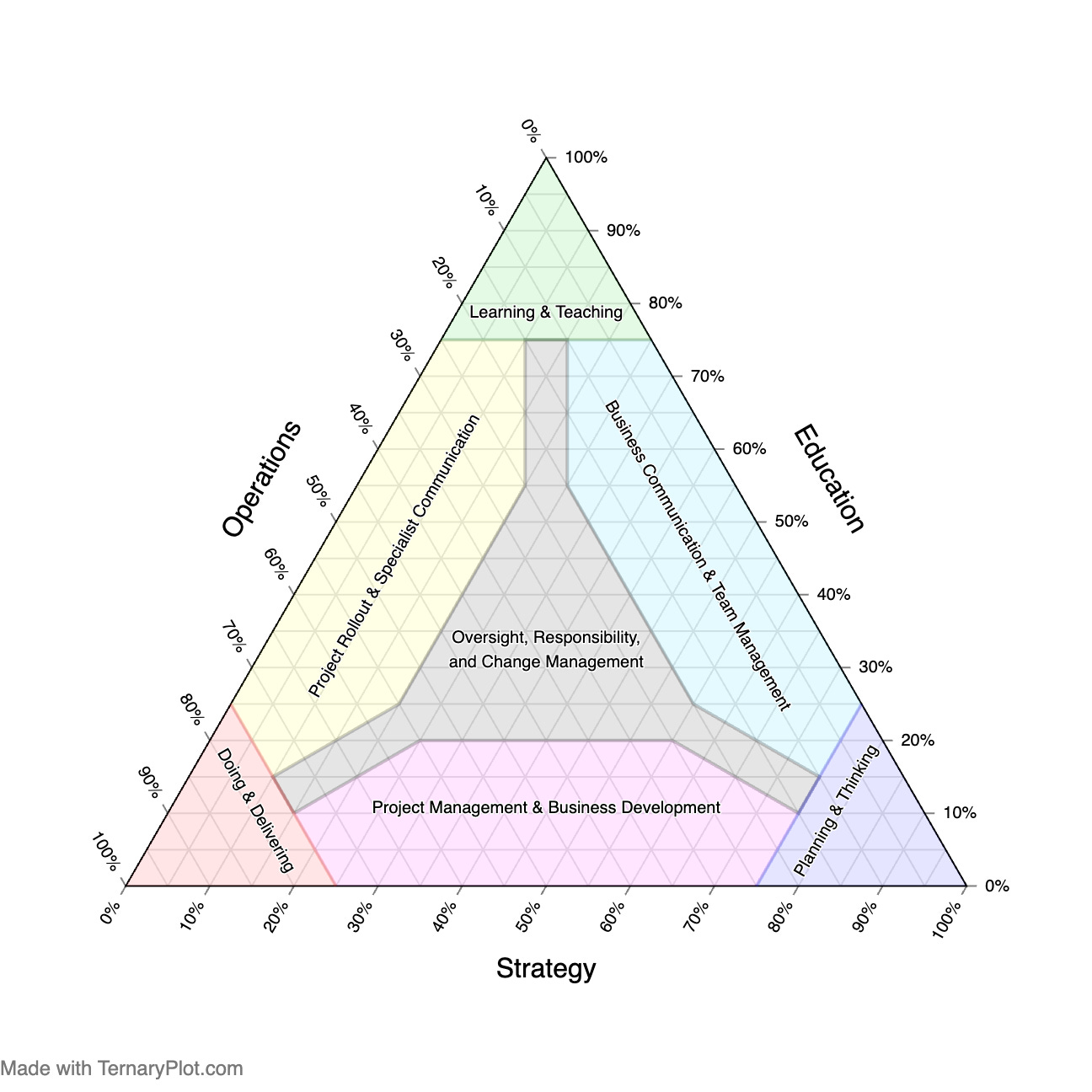TL;DR: The Business Trinity Theory
A way to think about business activities to inform thinking, actions, and growth.
Welcome to TL;DR. This is where we take a post or topics from The Technician’s MBA and summarise the key points in less than 1000 words. The main posts referenced will contain more information regarding the points we highlight, and perhaps more than we summarise here; however we want to give you a quick read that can help peak your interest for those times you where you only have a few minutes to spare.
TL;DR Details:
Words: 572
Approx. Reading Time: 3-5 minutes
Link to Post:
The Business Trinity Theory
From my experiences I have been able to identify a way of breaking down any task in a business into its core components: The Business Trinity Theory.
The Business Trinity Theory
Every role, project, and objective in a business can be represented as a combination of how much time is spent on the following core elements in order to deliver value for the business:
Operations: Tasks focused on delivery or the completion of work
Education: Tasks focused on personal learning or teaching others
Strategy: Tasks focused on planning or preparation
When you break a task or position down with the Business Trinity Theory, you get a percentage allocation i.e. Junior Data Scientist = {Operations: 90%, Education: 10%, Strategy: 0%}.
This breakdown means we can use a ternary plot to visualise it – The Business Trinity Compass
Introduction to The Business Trinity Compass
This is the start for the Business Trinity Compass, and we finalise it after introducing another concept to help illustrate why we introduce the final component to the compass.
You can find a “how to read guide” for a ternary plot in the main post or by visiting this link. Essentially follow the grid lines to the axis where the tick mark direction matches the direction of the line.
The zones on the Business Trinity Compass allow us to visualise:
The expected range for the core components
The types of activities we are likely to do
The outcomes we are likely to see
What other activities we might need to consider from adjacent zones.
Definitions for each zone, and more details, can be seen in the main article.
As you progress across your career your position on the Business Trinity Compass will change as your responsibilities do. For example:
Junior: {Operations: 90%, Education: 10%, Strategy: 0%}.
CXO: {Operations: 20%, Education: 40%, Strategy: 40%}
As you progress the tasks associated with each component will change too; Operations for a CXO might not be hands on coding but rather delivering the vision, and Education for Junior may be learning new skills, but a CXO may be teaching others.
Uses for the Business Trinity Theory
With the Business Trinity Theory and the Business Trinity Compass we can use it in the following ways:
Career Management Tool: Looking where you are, where you want to go, and the tasks that you need experience with on the way
Time Management Tool: The breakdown of the core components gives you a good indication about the proportion of time that should be spent as an individual or across the team.
Project Planning Tool: When scoping you can use The Business Trinity theory to estimate the amount of time you need, and when compared to the resource available you can understand its feasibility and any required actions.
Extending the Business Trinity Compass
This isn’t the final form for the Business Trinity Compass, we are going to introduce the last aspect after we introduce “The Cycles of Discovery and Innovation”. Through placing these activities on the compass will unlock areas on the Business Trinity Compass which further highlight the types of activities that are associated with the central zones.
These areas of the Business Trinity Compass are used in The Technician’s MBA as tags to categorise our content to make it easy to find posts around topics you are interested in.
GTFYT
If you liked this please consider subscribing, and you can find the link to the main post, where you can find more information about this topic, below.




